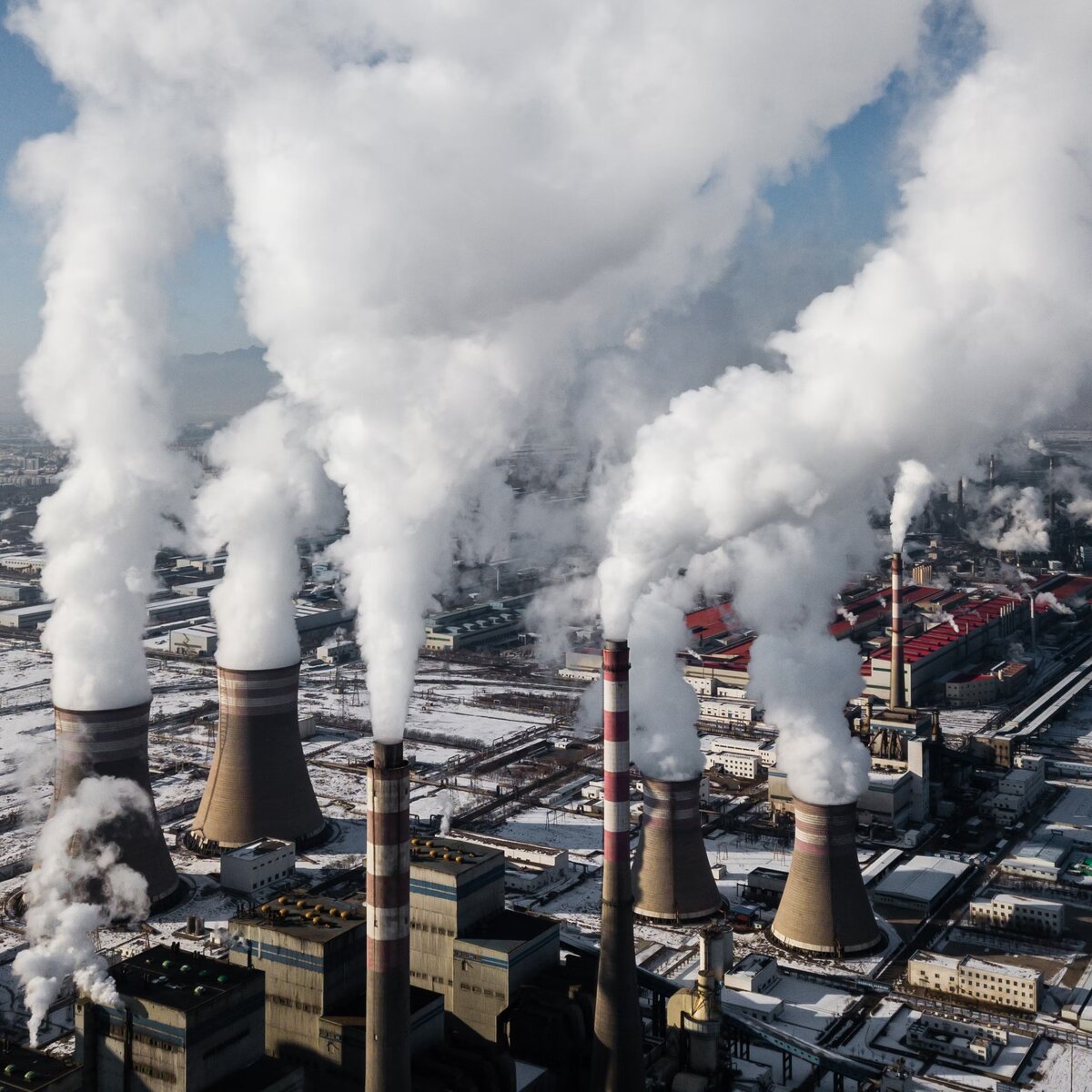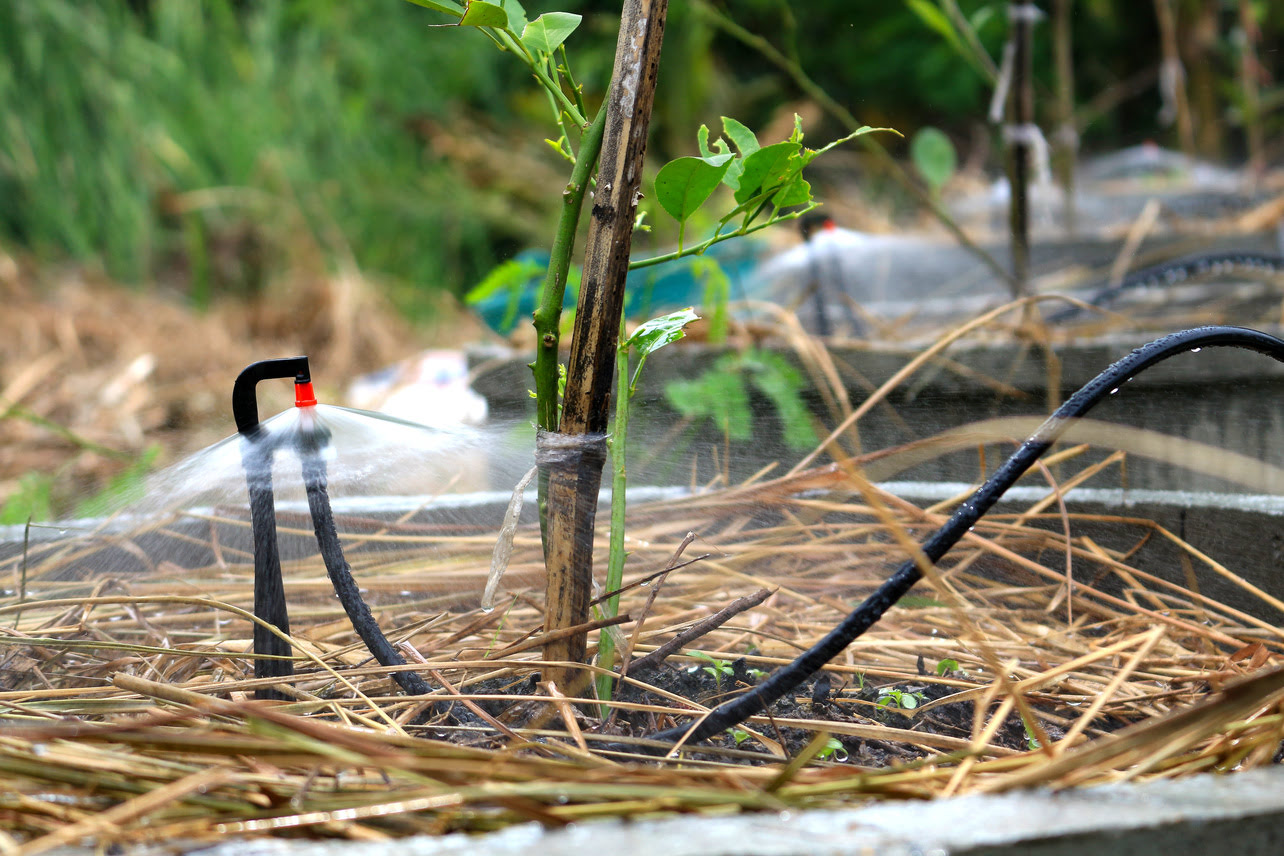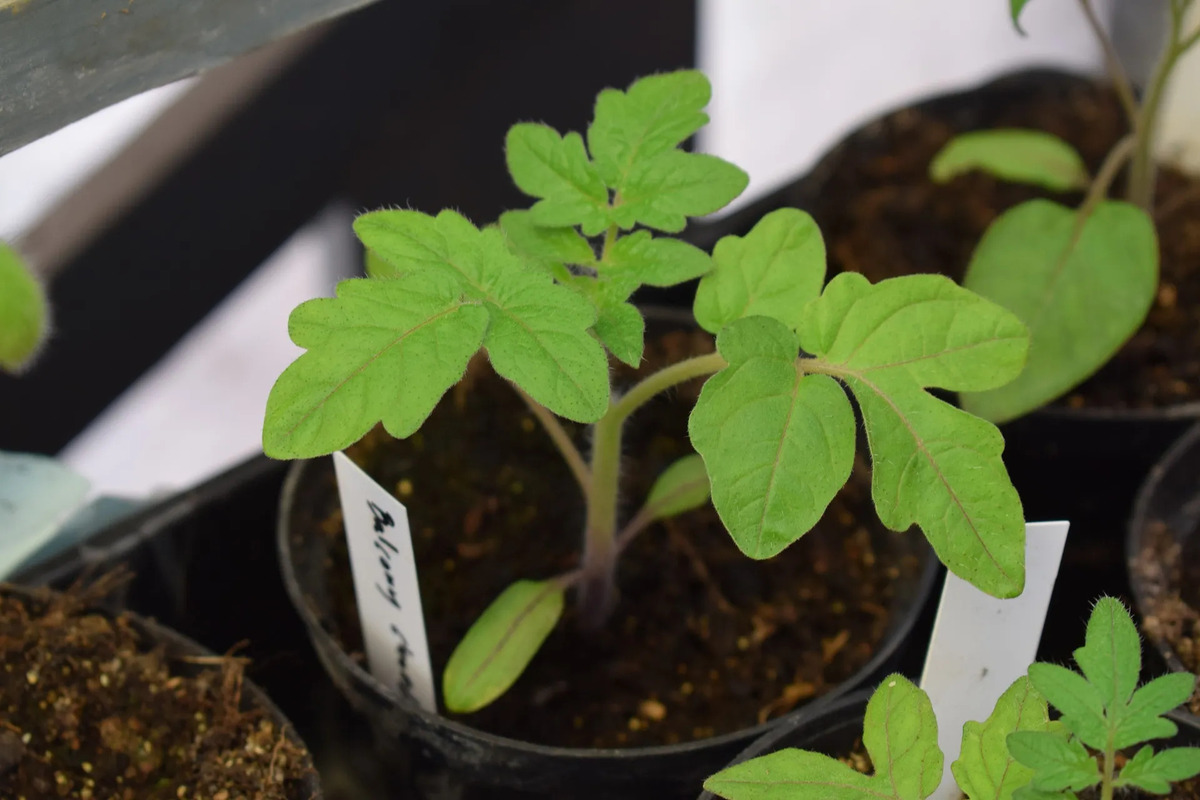Home>Gardening News and Trends>Latest News>Which Of The Following Statements About Irrigation Is Not True?


Latest News
Which Of The Following Statements About Irrigation Is Not True?
Modified: February 5, 2024
Stay updated with the latest news on irrigation. Find out which of the following statements about irrigation is not true and gain valuable insights.
(Many of the links in this article redirect to a specific reviewed product. Your purchase of these products through affiliate links helps to generate commission for Chicagolandgardening.com, at no extra cost. Learn more)
Table of Contents
Introduction:
Irrigation is a vital practice in agriculture, providing water to crops when rainfall is insufficient or unreliable. It plays a significant role in enhancing food production and sustaining agricultural economies. However, there are several statements about irrigation that need to be examined to determine their accuracy. In this article, we will explore statements about irrigation and assess their validity based on current knowledge and research.
By analyzing these statements, we aim to obtain a comprehensive understanding of the benefits, challenges, and potential risks associated with irrigation. This knowledge will empower farmers, policymakers, and stakeholders in making informed decisions about the use of irrigation systems.
Throughout history, irrigation has been instrumental in transforming arid lands into fertile regions, allowing civilizations to thrive and flourish. It has been responsible for increasing crop yields, ensuring food security, and alleviating water scarcity in many areas.
However, as with any agricultural practice, irrigation also comes with its set of challenges. It is crucial to dispel any misconceptions and identify the true implications of irrigation to effectively manage its impact on water resources, the environment, and agricultural productivity.
In the following sections, we will analyze five statements related to irrigation and critically evaluate their validity. These statements cover various aspects, including water conservation, crop yields, cost-effectiveness, environmental risks, and the influence of climate change on irrigation.
Through a comprehensive examination of these statements, we can better understand the complexities of irrigation and its multifaceted impacts. It is essential to recognize both the benefits and potential drawbacks to promote sustainable irrigation practices that contribute to long-term environmental and agricultural sustainability.
Statement 1: Irrigation conserves water
Irrigation is often portrayed as a water-intensive practice, leading to the belief that it contributes to water scarcity and wastage. However, the reality is more complex. While it is true that irrigation requires water, it can also be a powerful tool for water conservation when managed properly.
Effective irrigation techniques, such as drip irrigation and precision sprinklers, deliver water directly to the plant root zone, reducing evaporation and minimizing water loss. Compared to traditional flood irrigation methods, these modern irrigation techniques can significantly reduce water consumption by up to 30-50%.
Furthermore, irrigation allows farmers to optimize water usage by providing the right amount of water at the right time, ensuring that crops receive sufficient moisture to thrive without excess water runoff. By using advanced technologies like soil moisture sensors and weather-based controllers, irrigators can precisely monitor and adjust irrigation schedules, avoiding overwatering and decreasing water wastage.
Water recycling can also be practiced in irrigated systems. Techniques such as capturing and reusing runoff or treated wastewater for irrigation can reduce the reliance on freshwater sources and promote sustainable water management.
Additionally, in arid regions where rainfall is minimal, irrigation is essential for maintaining agricultural productivity. By providing water to crops that would otherwise wither and die, irrigation ensures the continuous availability of food and sustains rural economies.
However, it is crucial to note that improper irrigation practices can lead to water misuse and environmental consequences. Over-irrigation, inadequate drainage systems, and inefficient irrigation machinery can result in the leaching of nutrients and agrichemicals into water bodies, leading to contamination and ecological damage.
To address these challenges, it is essential to promote efficient irrigation techniques, educate farmers on proper water management, and invest in infrastructure that minimizes water loss and runoff. By implementing responsible irrigation practices, we can harness the benefits of irrigation while conserving water resources and mitigating environmental impacts.
Statement 2: Irrigation increases crop yields
One of the primary aims of irrigation in agriculture is to enhance crop yields by providing plants with adequate water for growth and development. This statement holds true, as irrigation has been proven to increase agricultural productivity in various regions around the world.
Water is a critical component for plant growth, playing a vital role in photosynthesis, nutrient absorption, and cellular processes. When natural rainfall is insufficient, irrigation acts as a supplement, ensuring that plants receive the required amount of water to optimize their growth potential.
Irrigation allows farmers to cultivate crops in areas where rainfall is unpredictable or insufficient for sustained plant growth. By providing a consistent and controlled water supply, irrigation enables farmers to grow crops throughout the year, regardless of seasonal rainfall patterns.
Moreover, irrigation systems enable farmers to cultivate crops that are not well-suited to dry or arid conditions. By providing an artificial water source, such as through drip irrigation or pivot systems, farmers can expand their crop choices and diversify their agricultural production.
Studies have shown that irrigated crops consistently yield higher quality and quantity compared to rainfed crops. A steady water supply ensures optimal plant health, leading to improved nutrient uptake, enhanced photosynthesis, and more robust root development.
Irrigation provides farmers with greater control over crop growth conditions, allowing them to tailor irrigation schedules and methods to the specific needs of different crop varieties. This precision in water management can result in higher yields, improved crop uniformity, and reduced risk of crop failure due to drought or water stress.
However, it is important to note that irrigation alone is not sufficient to guarantee increased crop yields. Other factors such as soil fertility, pest management, and proper crop selection also play crucial roles in agricultural productivity. It is essential to integrate irrigation practices with sound agronomic practices to maximize the potential benefits and optimize crop yields.
Furthermore, it is important to consider the potential risks associated with irrigation, such as waterlogging and salinization. Improper irrigation practices can lead to excessive water accumulation in the soil, causing root damage and decreased yields. Additionally, poor water quality or improper drainage can result in soil salinization, reducing plant growth and productivity.
Overall, while irrigation can significantly increase crop yields, it should be implemented in conjunction with other best practices and management strategies to maximize the benefits while minimizing potential drawbacks.
Statement 3: Irrigation is always cost-effective
Irrigation systems are often regarded as investments that can lead to increased agricultural productivity and financial returns. While irrigation can provide numerous benefits, it is important to recognize that its cost-effectiveness is not always guaranteed in all situations.
Implementing irrigation systems involves various expenses, including the installation of infrastructure such as pipelines, pumps, and sprinklers, as well as ongoing maintenance and operation costs. The initial investment and recurring expenses associated with irrigation can be significant, particularly for small-scale farmers or those in regions with limited financial resources.
Additionally, the cost-effectiveness of irrigation depends on several factors, including the type of irrigation system used, the availability and cost of water sources, the scale of farming operations, and market conditions for agricultural products.
In areas with ample water resources and favorable rainfall patterns, the need for irrigation may be reduced, making it less cost-effective compared to relying on natural precipitation alone. In such cases, farmers may choose to focus their resources on other agricultural practices that offer better returns.
Moreover, the cost-effectiveness of irrigation depends on the specific crop being cultivated. Some crops, such as high-value horticultural crops, may generate higher returns on investment due to increased yields and improved product quality resulting from irrigation. On the other hand, for certain low-value crops or crops that require minimal water, the cost of irrigation may outweigh the economic benefits.
In addition to direct financial costs, it is essential to consider the potential long-term socioeconomic and environmental impacts of irrigation. Overexploitation of water resources for irrigation can lead to water scarcity, compromising the sustainability of agricultural practices and posing long-term economic challenges for farmers and communities.
Furthermore, the cost-effectiveness of irrigation can be influenced by external factors such as energy costs, market prices for agricultural products, and government policies related to water management and pricing. Fluctuations in these factors can affect the profitability of irrigation investments.
Despite the challenges, irrigation can still be economically viable and cost-effective in many cases. It offers the potential for increased crop yields, improved product quality, and the ability to cultivate crops that would otherwise not be possible. Additionally, advancements in irrigation technologies and practices, such as precision irrigation and water-efficient systems, can help optimize water use and reduce operational costs.
However, it is crucial for farmers to undertake careful feasibility studies, taking into account the specific conditions and limitations of their farming operations, before investing in irrigation systems. Proper planning, proper management, and the consideration of long-term sustainability are essential to ensure that irrigation remains a viable and cost-effective practice.
Statement 4: Irrigation poses no environmental risks
While irrigation plays a crucial role in food production, it is important to recognize that it is not without its environmental risks. The intensive use of water for irrigation can have significant ecological impacts if not managed properly.
One of the potential risks of irrigation is the depletion of water sources. Excessive extraction of water from rivers, lakes, or underground aquifers can lead to groundwater depletion, reduced streamflow, and diminished water availability for ecosystems and other water users. This can have far-reaching consequences on aquatic habitats, biodiversity, and the overall ecological balance of an area.
Furthermore, improper irrigation practices can result in water wastage, especially if inefficient irrigation systems are used. Water loss through evaporation, runoff, or inefficient application methods not only represents a waste of a valuable resource but can also exacerbate water scarcity and environmental stress in water-stressed regions.
Another potential environmental risk associated with irrigation is the leaching of fertilizers and agrochemicals into water bodies. When irrigation water infiltrates the soil, it can carry with it chemical substances used in agricultural production. These substances, if not properly managed, can contaminate groundwater and surface water, posing risks to human health and aquatic ecosystems.
Moreover, improper irrigation management can lead to soil degradation. Over-irrigation can cause waterlogging, which hampers root development and reduces soil oxygen levels, leading to decreased crop productivity. Additionally, excessive irrigation can promote the accumulation of salts in the soil, resulting in soil salinization, which renders the land less fertile and potentially prohibits crop growth.
Sediment runoff from irrigated fields can also pose environmental risks. Irrigation water that carries eroded soil particles can end up in nearby water bodies, causing sedimentation and impairing water quality. This can negatively impact aquatic habitats and disrupt the natural balance of aquatic ecosystems.
It is essential to mitigate the environmental risks associated with irrigation through the adoption of sustainable and responsible practices. Implementing efficient irrigation methods, such as drip irrigation and precision sprinklers, can reduce water usage and minimize water loss. Employing proper irrigation scheduling techniques based on crop water requirements and soil moisture levels can prevent over-irrigation and waterlogging issues.
Additionally, utilizing best management practices, such as integrating nutrient management strategies and erosion control measures, can help minimize the environmental impact of fertilizers and sediment runoff from irrigated fields. Employing proper irrigation system maintenance, regular monitoring, and evaluation can ensure that irrigation systems function optimally, reducing the risk of environmental harm.
By addressing these environmental risks associated with irrigation and promoting sustainable irrigation practices, we can strive to achieve a balance between agricultural productivity and environmental stewardship.
Statement 5: Irrigation is not affected by climate change
Irrigation, like many other aspects of agriculture, is indeed affected by climate change. As the Earth’s climate continues to change, the patterns of rainfall, temperature, and weather events are being altered, posing challenges and uncertainties for irrigation practices.
One of the significant impacts of climate change on irrigation is the alteration of precipitation patterns. Changes in rainfall intensity and distribution can disrupt traditional irrigation schedules and make it more challenging for farmers to estimate water availability accurately. Areas that previously relied on predictable rainfall patterns may now experience increased variability and periods of prolonged drought, requiring adjustments in irrigation strategies.
Rising temperatures associated with climate change can also exacerbate water stress and evapotranspiration rates. Higher temperatures can accelerate soil moisture evaporation, increasing the demand for irrigation water. This can lead to greater water requirements for crops and potentially strain water resources, particularly in regions already facing water scarcity challenges.
Extreme weather events, such as hurricanes, floods, and storms, are expected to become more frequent and intense with climate change. These events can have detrimental effects on irrigation infrastructure and distribution systems, leading to disruptions in water delivery. Flooding events can also result in soil erosion, sedimentation of irrigation channels, and contamination of water sources, further impacting irrigation practices.
Additionally, climate change can alter the timing and behavior of pests and diseases, affecting crop health and productivity. Changes in temperature and moisture conditions can create more favorable environments for pests and diseases to thrive. As a result, farmers may need to adapt their irrigation strategies to manage the increased pest and disease pressure, potentially requiring more frequent or targeted water applications.
Furthermore, climate change can impact the availability and quality of freshwater sources used for irrigation. Changes in precipitation patterns, glacial melt, and sea-level rise can affect the quantity and quality of water resources. Reduced water availability and increased salinization of water bodies can constrain irrigation options and necessitate the use of alternative water sources or the implementation of water conservation measures.
Adapting to the challenges posed by climate change requires innovative approaches and technologies for irrigation. This includes developing drought-tolerant crop varieties, implementing water-saving irrigation techniques, and exploring alternative water sources such as rainwater harvesting or wastewater recycling.
Moreover, building resilience and promoting sustainable water management practices are critical to ensure the long-term viability of irrigation systems in the face of climate change. This involves incorporating climate data into irrigation planning, investing in efficient irrigation infrastructure, promoting water-efficient practices, and fostering awareness and education among farmers on climate-smart irrigation.
By recognizing the impacts of climate change on irrigation and taking proactive measures to adapt and mitigate its effects, we can enhance the resilience of agricultural systems and ensure the continued availability of water for irrigation.
Conclusion:
In conclusion, irrigation is a complex and multifaceted practice in agriculture that has both benefits and potential limitations. It is not only essential for increasing crop yields and ensuring food security but also presents opportunities for water conservation and sustainable water management.
Through careful water management and the adoption of efficient irrigation techniques, water usage can be optimized, reducing wastage and conserving this valuable resource. Precision irrigation methods, such as drip irrigation and soil moisture sensors, allow for precise water application, minimizing water loss and maximizing crop productivity.
However, it is crucial to acknowledge that irrigation is not without its challenges. Improper irrigation practices can lead to environmental risks, such as water depletion, soil degradation, and contamination of water bodies. These risks can be mitigated through responsible irrigation management, the integration of best practices, and the use of appropriate technologies.
Furthermore, the cost-effectiveness of irrigation is context-dependent and influenced by various factors, including the type of irrigation system used, water availability and pricing, crop selection, and market conditions. Thorough feasibility studies and long-term planning are crucial to ensure that irrigation investments are economically viable and sustainable for farmers.
Last but not least, climate change poses additional uncertainties and considerations for irrigation. Changes in precipitation patterns, temperature, and extreme weather events can impact water availability, crop water requirements, and the overall viability of irrigation systems. Adapting to these challenges requires innovation, resilience, and the implementation of climate-smart irrigation practices.
In summary, irrigation plays a vital role in supporting agricultural productivity and food security. By recognizing its benefits and limitations, adopting responsible and efficient irrigation practices, and integrating climate-smart approaches, we can harness the potential of irrigation while ensuring the long-term sustainability of water resources, environmental preservation, and economic viability for farmers.




